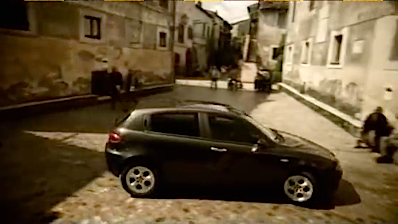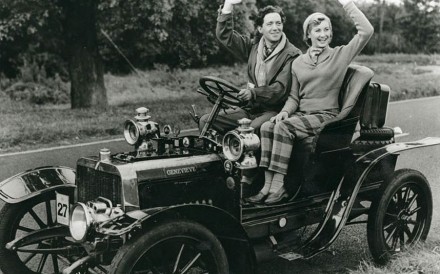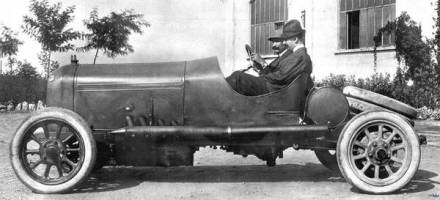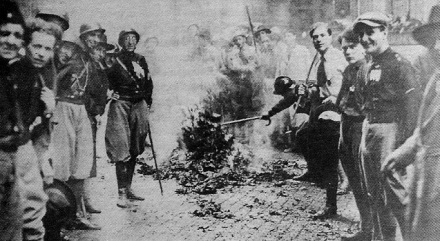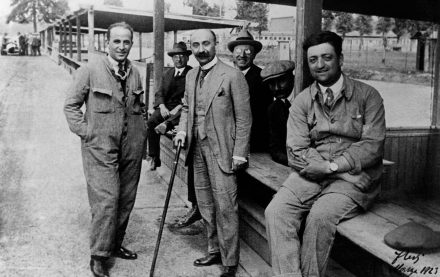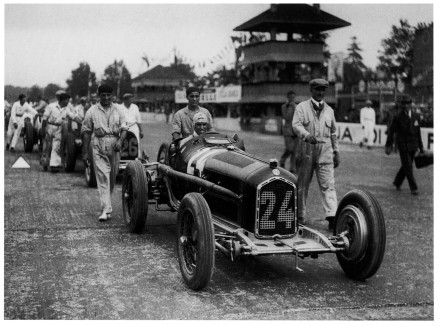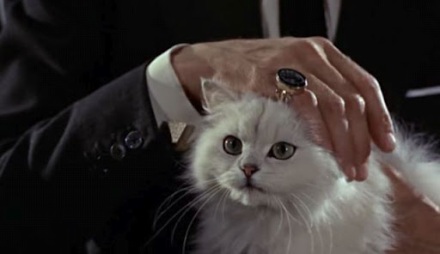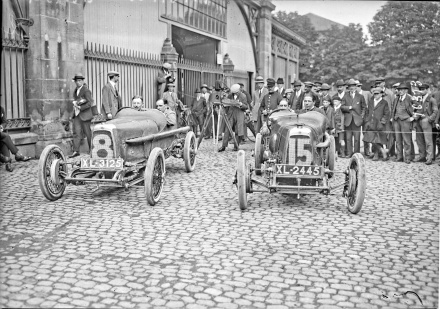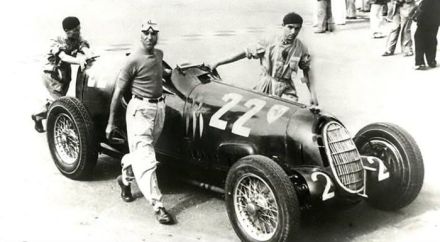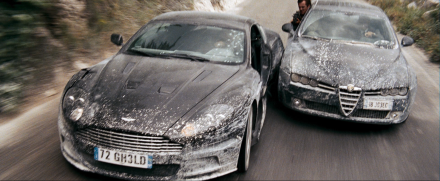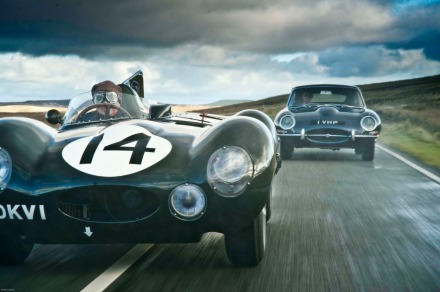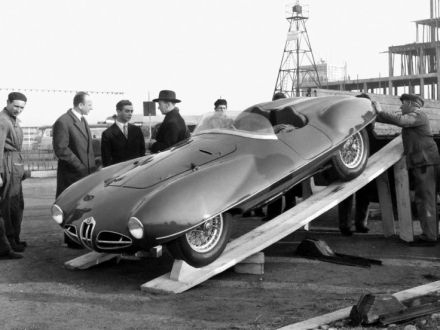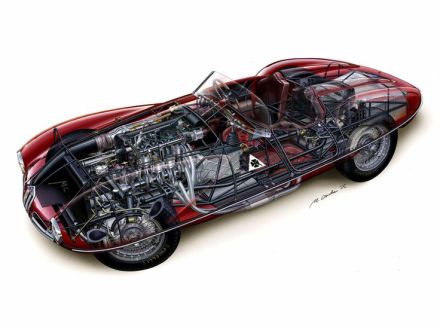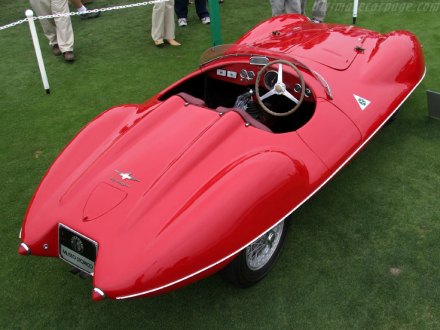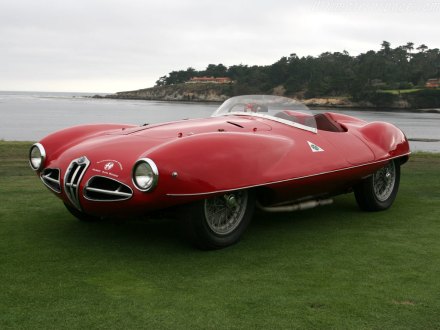In Part 1 of Alfa Romeo’s story, its factory was built in Milan with British money on a road named after a Roman emperor… but named after a Frenchman’s favourite restaurant. It went bust more than once and was taken over during World War 1 by a Neapolitan with a sense of adventure and a large military contract.
After almost 15 years of high drama, Alfa Romeo had set course for glory when its racing team won the 1920 Circuit of Mugello… but there were still plenty of banana skins underfoot. The next setback came in 1921, when the Banco Italiana di Sconto, Alfa Romeo’s main creditor, was wiped out in a cataclysmic plunge for the Italian economy.
Immediately the assets of all debtor companies were seized by the central Banca Nazionale di Credito – including those of Alfa Romeo. Amid this great political and financial storm, Benito Mussolini emerged from the chaos and marched on Rome demanding power for the Fascists. Rome was powerless to refuse and among the many assets to fall into il Duce’s lap were the Banca Nazionale di Credito and, as a result, Alfa Romeo.
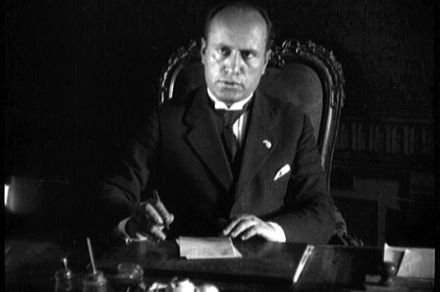
Mussolini assumed authority in Rome and nationalised the motor industry
When the dust had settled, Alfa Romeo’s chairman Nicola Romeo and his right-hand man Giorgio Rimini decided that Alfa Romeo needed modernising. This was a great buzzword in Fascist circles but it was also true in the sense that chief designer Giuseppe Merosi’s products were close to becoming antiques.
The most forward-looking automotive engineer in Italy at that time was Vittorio Jano, who had brought grand prix racing success to Fiat. Giorgio Rimini dispatched Enzo Ferrari to Turin as emissary to open negotiations with Jano about joining Alfa Romeo.
Ferrari went first to Jano’s wife to sound her out about a possible move to Milan. Having got the lie of the land, and presumably convinced Signora Jano of the attractions in Milan, Ferrari then approached the great designer himself. Jano said that he might consider moving from Fiat but would need to talk ‘to the organ grinder and not the monkey’.
This would not have been an easy pill for Enzo Ferrari to swallow, but he duly made his report. Alfa Romeo’s finance director then followed up with an offer to double whatever Jano was being paid by Fiat… and the deal was swiftly concluded.
The highest priority was given to creating a world-class motor racing programme. Giuseppe Merosi had produced a new, sleek racing car called the P1 but its engine was prehistoric. Into this car Jano slotted a variation on the engine designs that he had created at Fiat: a supercharged twin-cam straight-eight of just under 2 litres in capacity that boasted 140 horsepower and could reach 9,000 rpm.
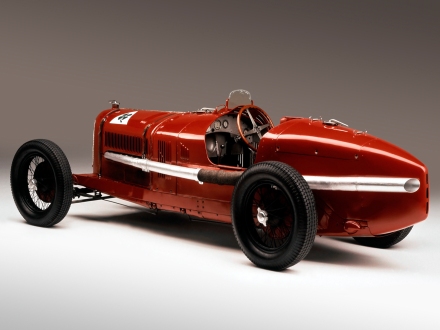
Vittorio Jano’s engine created the dominant Alfa Romeo P2
Thus was created the Alfa Romeo P2. In 1924 it won the Circuit of Cremona in the hands of Antonio Ascari, then Giuseppe Campari won the Grand Prix de l’ACF on the historic Lyon road circuit. The year ended with victory at home in Milan’s royal park at Monza for the Gran Premio d’Italia, taken by Ascari, to prove that the P2 was absolutely the class of the field.
Its rise was timely because the sport’s governing body, the AIACR, declared that there would be a world championship title for Grand Prix cars in 1925.
The four points-scoring races were the Indianapolis 500, which was won by Duesenberg, the Belgian Grand Prix at Spa-Francorchamps, the Grand Prix de l’ACF at Montlhéry and the Italian Grand Prix at Monza.
The Belgian Grand Prix at Spa saw three Alfa P2s line up against a quartet of Delages. Two of the Delages were out before the end of the third lap and the other two weren’t all that far behind them. One of the Alfas went down with broken suspension, which left two surviving P2s circulating contentedly.
Quite how much truth there is to the story of Vittorio Jano having a table laid in the pit lane and inviting his drivers to dine with him when they stopped is largely a matter of conjecture. Something must have gone on, although doubtless the story has spent many years getting better with each telling.
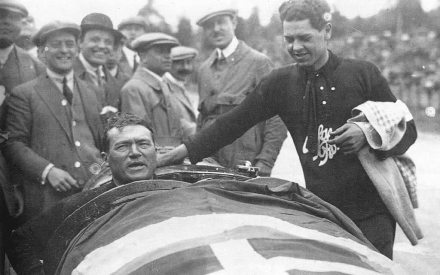
Antonio Ascari and riding mechanic Giulio Ramponi celebrate their win at Spa – the last time that riding mechanics would be seen
Antonio Ascari won in Belgium and was the form man when the circus arrived at the new purpose-built circuit at Montlhéry in France for the Grand Prix de l’ACF. The venue was intended to maximise crowd safety both within the bowl of the autodrome and on the closed public roads of the rest of the circuit. Pale fencing made of chestnut wood was erected around the course to hold back the more enthusiastic spectators but Ascari was one of several drivers who feared that the fencing could potentially cause a disaster.
Sure enough, as rain started to fall on race day, Ascari ran wide on the flat-out kink halfway down the return straight and his wheel snagged the pale fence. He fought for a few seconds to control the lurid slide before the car tipped, throwing him out and then rolling over his prone body. Alfa’s fastest driver died in the ambulance on his way to hospital.
If there was one positive to be drawn, it was that this was the first Grand Prix to be run without the need for riding mechanics – sparing the life of Ascari’s mechanic, Giulio Ramponi. As it was, the surviving Alfas of Gastone Brilli-Peri and Giuseppe Campari were withdrawn and Delage won the race unopposed – Robert Benoist and Albert Divo sharing the winning car.
A promising young motorcycle racer, Tazio Nuvolari, was brought to Monza for the deciding race to fill in for Ascari, but he crashed in practice and ended up in hospital with broken ribs so American-Sicilian driver Pete de Paolo took the third car instead. In the end Gastone Brilli-Peri claimed victory with Campari finishing second and de Paolo fifth. It was more than enough for Alfa Romeo to claim the first ever World Championship title for Grand Prix racing.
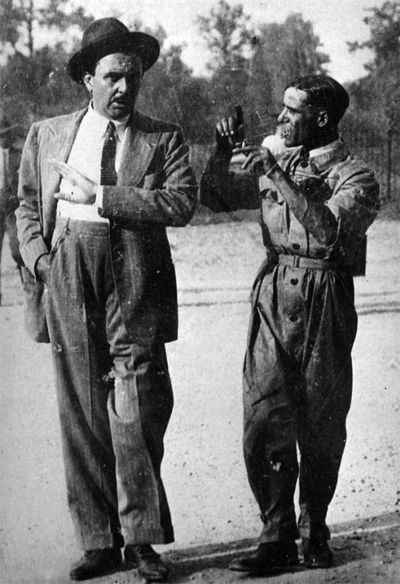
Vittorio Jano and Tazio Nuvolari would come to define Alfa’s fortunes in the 1930s
The scarlet cars had brought glory to Italy against the best that France and Britain had to offer. This success meant that there were many who wanted to claim a little of that caché for their own ends… as we will see in Part 3.



